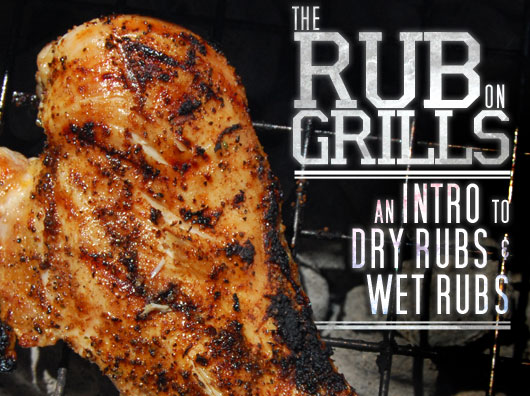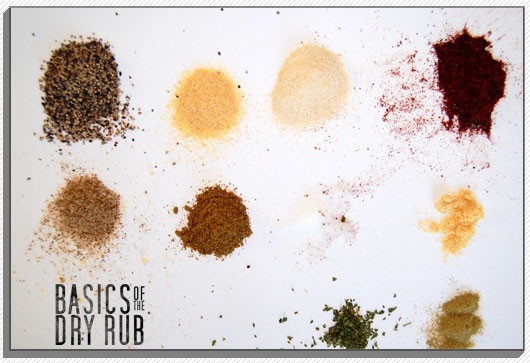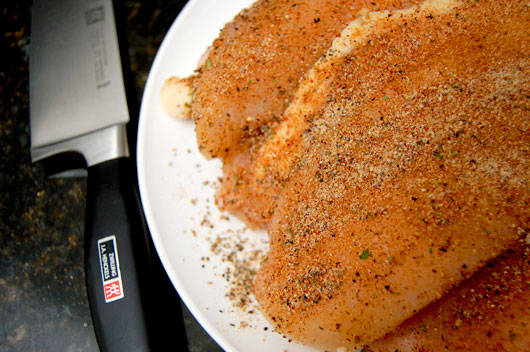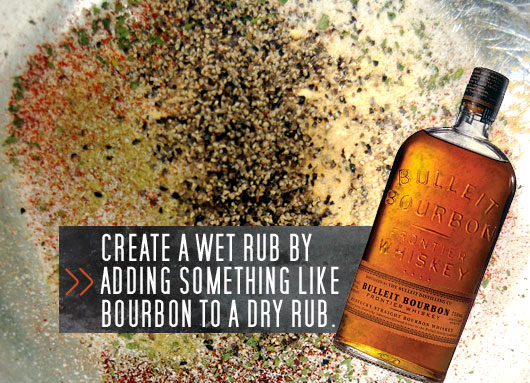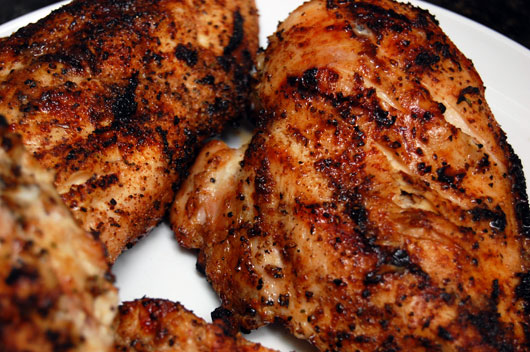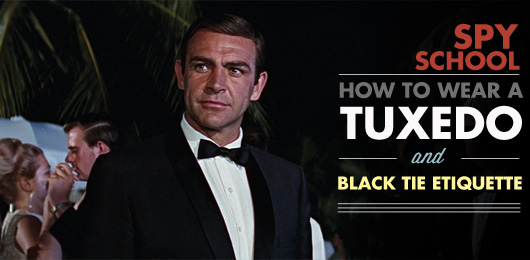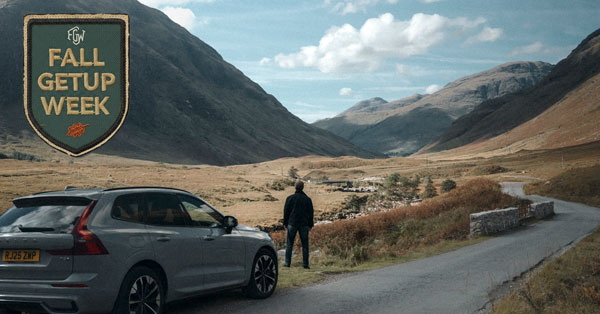Legends are born out of good barbecue and the grill man is revered like a dragon slayer. Rubs are fundamental to controlling flavor on the grill and critical for distinguishing grilling from barbecuing. They can compensate for flavor lost using a gas grill or capture flavor over charcoal.
A rub is simply a combination of seasonings that are, literally, rubbed into meat (or vegetables) before grilling. There are dry rubs, there are wet rubs and they both have a unique calling. Know your ingredients; know your grill; then think about rubs.
The Dry Rub
What is it? A dry rub is a mixture of herbs and spices, with no liquids. It creates a crust; enhancing flavor without adding moisture.
When to try dry? A dry rub is great on food that that is cooked faster (at a higher temperature, like on a gas grill) and on food that probably won’t tenderize much, like shrimp or thick chicken breasts. Fish, whether flaky or oily, loves the crunch of a good dry rub. Fish can be great with either rub style but many grill men use dry to add an explosion of taste to the outside without overpowering the taste inside. You might not want to mess with the natural flavor and juices in a fresh, tender steak—a light dry rub will not disturb the internal chemistry.
What’s in it? Many familiar spices are common in dry rubs: Paprika, dry mustard, chili powder, garlic powder, onion powder, black pepper, unrefined salt, white pepper, lemon pepper, cayenne, coriander, cumin, dried lemon/lime zest, brown sugar, sage and thyme. Improvisation is key; just make it flavorful—trust your instincts; the aroma will tell you a lot about how it will taste.
Most dry rubs combine equal amounts of 6 to 10 herbs and spices, excluding paprika. Paprika is the base of the majority of rub recipe's you'll find. Take this recipe and tweak it any way you see fit, the combination of seasonings works especially well on shrimp and chicken:
Tip: You can make a dry rub any time you’re inspired. Store it in a sealed container with the rest of your spices, and it will last just as long.
- 3 parts paprika
- 1 part cayenne pepper
- 1 part onion powder
- 1 part black pepper
- 1 part unrefined salt
- 1 part sage
- 1 part lemon pepper
- 1 part dried lemon zest
Add more paprika for a stronger, smokier flavor. Control the spiciness by adjusting the amount of cayenne (or chili) pepper. Increasing the amount of paprika and other ground peppers will take the rub closer to a blackening.
How do I use it? Massage the rub in, by hand, before grilling; the more time the rub has to mingle with the meat the more the flavors will sink in. The best way to get the savory, crispy crust is to ensure that your cooking surface is really hot. Lower the grate as close to the coals as possible–hardwood charcoal creates a hotter fire but wood chips can be sprinkled over coals to increase the temperature. If using a gas grill crank it up as high as you can for the first couple of minutes cooking on each side. A hot cooking surface will sear the rub into the skin quickly, sounding like a cross between hissing and heavy rain on asphalt. It will darken quickly and may even smell slightly smoldering; this is usually just the ground peppers and paprika sizzling–keep an eye on things and move to a cooler spot on the grill (or lower the temperature) to finish the job when the outside looks dark enough.
The Wet Rub
What is it? Take a dry rub and add moisture, now you have a wet rub.
When is wetter better? The wet rub realizes it’s full potential when applied generously and cooked in slowly–slow cooking is the ideal method for flavoring meat all the way through. Ribs, pork chops and bone-in chicken beg for a wet rub; they draw moisture in from the rub while charring the outside. There is nothing quite like pulling a juicy, well glazed pork chop or sticky, bronzed spare ribs off the grill.
Grilled vegetables, such as portabellas or zucchini, can always benefit from seasoning and texture added by a wet rub (a dry rub won’t adhere well to a number of vegetables); and they don’t need as much time on the grill to cook through and form a succulent outer layer.
What’s in it? The moisture component can be one or many of these: Beer, wine, bourbon, soy sauce, cider vinegar, vegetable oil (peanut, olive, canola etc.) Worcester sauce, honey, molasses, Dijon mustard, tomato sauce, fruit juice, melted butter and so on. The consistency can range from a grainy paste to a sauce—as long as it sticks to the meat. This spicy and sweet wet rub is incredible on ribs; it is great on pork chops and chicken too:
Tip: If you’re looking up recipes avoid typing ‘wet rubbing’ into the search bar.
- 1 tablespoon paprika
- 1 tablespoon black pepper
- 1 tablespoon cayenne
- 1 tablespoon lemon pepper
- 1 tablespoon thyme
- 1 tablespoon unrefined salt
- ½ tablespoon onion powder
- 2 tablespoons brown sugar
- ¼ cup dark beer
- 1 tablespoon honey
- 1 tablespoon bourbon
- 1 tablespoon lime juice
In a bowl combine and mix the dry ingredients then stir in the liquids. If it’s too thick add more liquid.
How do I use it? Take your wet rub and smother the meat in it—if time permits, wrap it in plastic and let it sit in the fridge for an hour before grilling. Keep the grill cover down, the vent mostly closed, and slather on more whenever it’s time to flip (or every 15 minutes or so). A thick paste will absorb the flavor of your grill (charcoal, soaked wood chips etc.) and smoking or slow cooking will enable the wet rub to form a firm, dark outer layer while moisture, aroma and flavor are soaked up. If your rub is high in sugar content (brown sugar, honey etc.) keep the temperature lower (less than 350 degrees, to be exact) so it won’t burn but instead caramelize, browning the meat. This usually isn’t a problem on a charcoal grill but if it starts burning you’ll smell it and hear it; in that case just move it to a cooler spot on the grate.
The beauty of rubs is they can be a blend of pretty much anything, be inventive; take a recipe and make it your own by subbing in your favorite spices and omitting others. Constructing your own rub is a noble ambition but if you don’t have the time or the ingredients you can always use a store bought dry rub or use a thick barbecue sauce for a wet rub.
The important thing is knowing how, knowing when, and rubbing well.



